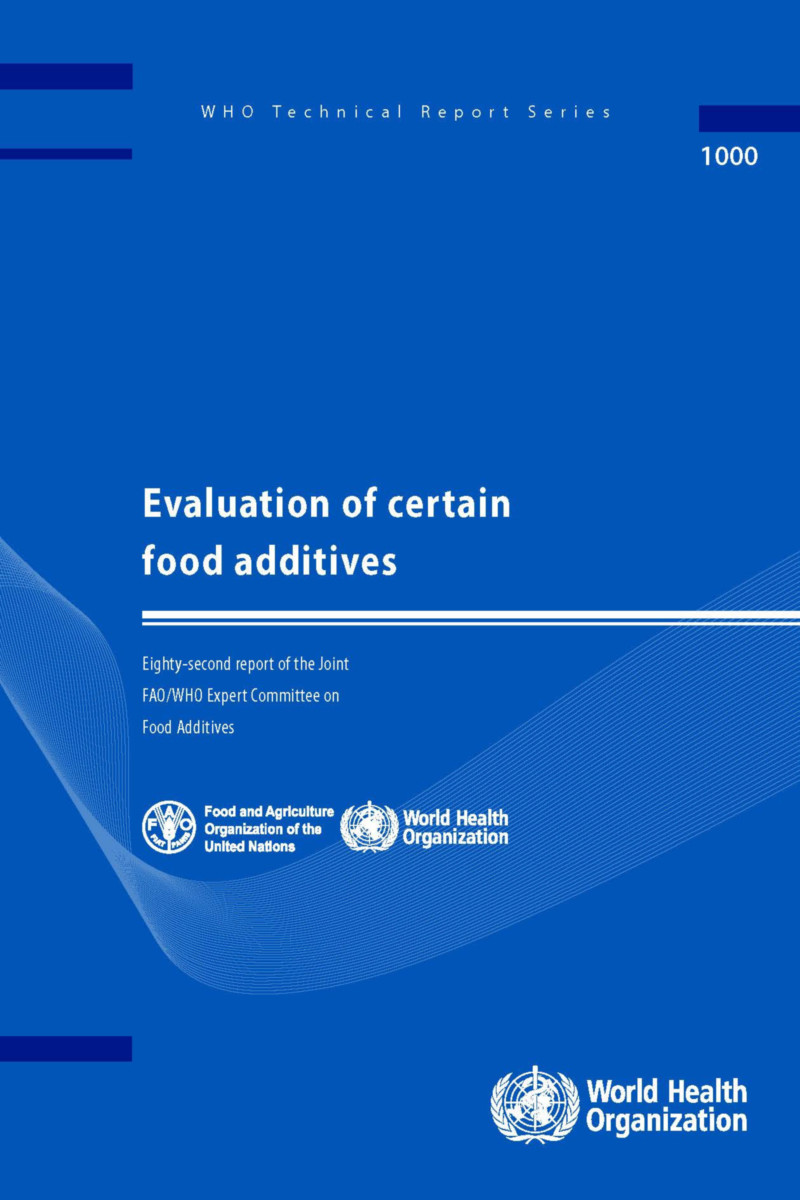Evaluation of Certain Food Additives
Eighty-second Report of the Joint FAO/WHO Expert Committee on Food Additives
- Publisher
World Health Organization - Published
15th December 2016 - ISBN 9789241210003
- Language English
- Pages 172 pp.
- Size 6.25" x 9.5"
This report represents the conclusions of a Joint FAO/WHO Expert Committee convened to evaluate the safety of various food additives, including flavoring agents, with a view to concluding as to safety concerns and to preparing specifications for identity and purity.
The first part of the report contains a general discussion of the principles governing the toxicological evaluation of and assessment of dietary exposure to food additives, including flavoring agents. A summary follows of the Committee's evaluations of technical, toxicological and dietary exposure data for 10 food additives (Allura Red AC; carob bean gum; lutein esters from Tagetes erecta; octenyl succinic acid (OSA)-modified gum arabic; pectin; Quinoline Yellow; rosemary extract; steviol glycosides; tartrazine; and xanthan gum) and five groups of flavoring agents (alicyclic, alicyclic-fused and aromatic-fused ring lactones; aliphatic and aromatic amines and amides; aliphatic secondary alcohols, ketones and related esters; cinnamyl alcohol and related substances; and tetrahydrofuran and furanone derivatives).
Specifications for the following food additives were revised: aspartame; cassia gum; citric and fatty acid esters of glycerol (CITREM); modified starches; octanoic acid; starch sodium octenyl succinate; and total coloring matters.
Annexed to the report are tables summarizing the Committee's recommendations for dietary exposures to and toxicological evaluations of all of the food additives and flavoring agents considered at this meeting.
World Health Organization
World Health Organization is a Specialized Agency of the United Nations, charged to act as the world's directing and coordinating authority on questions of human health. It is responsible for providing leadership on global health matters, shaping the health research agenda, setting norms and standards, articulating evidence-based policy options, providing technical support to countries, and monitoring and assessing health trends.


